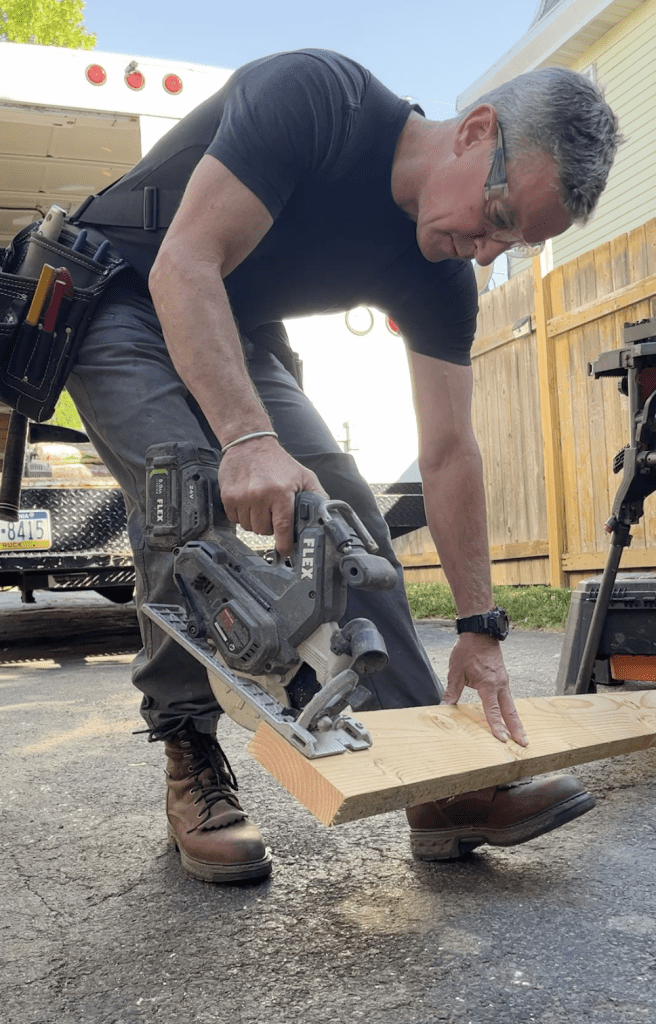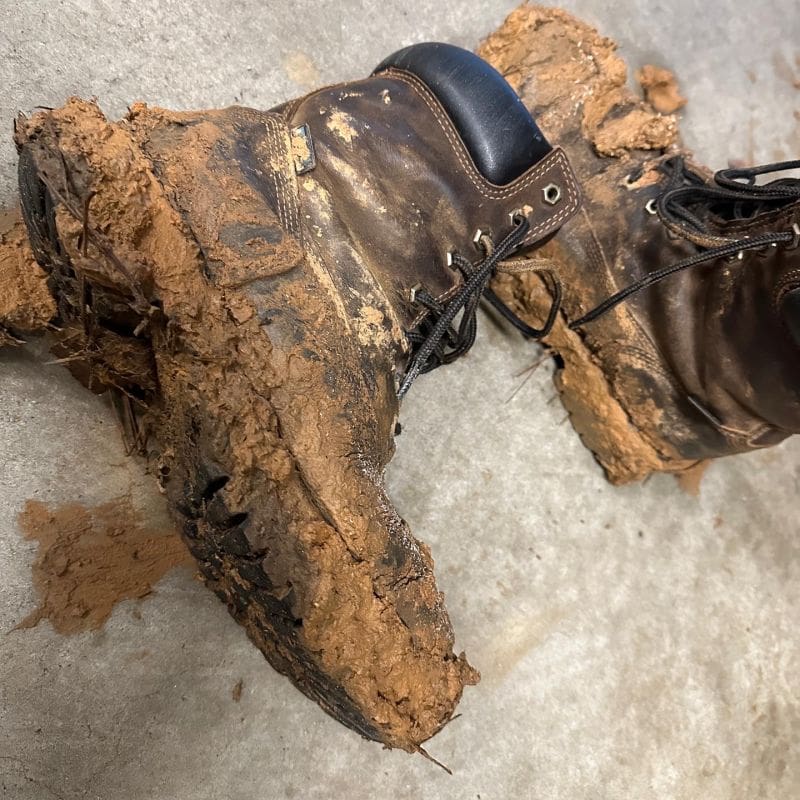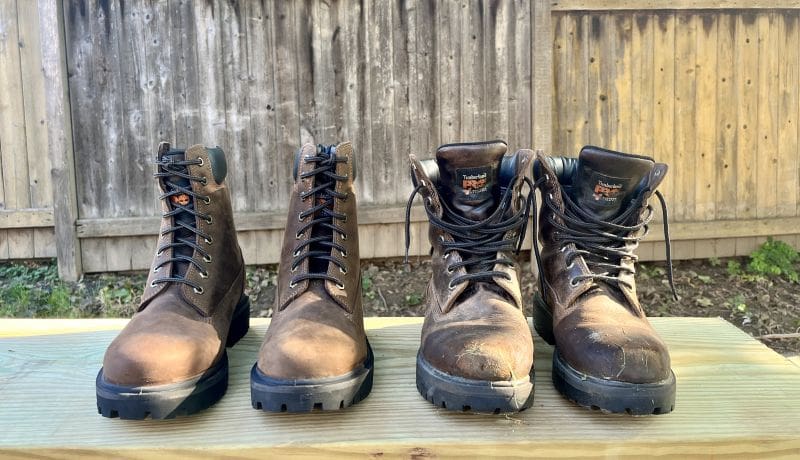
I’ve worn a lot of work boots over the past 20 years on job sites, doing everything from demo to roofing to landscaping to remodeling bathrooms, kitchens, and basements. And I’ve been in search of the best job site boots since the word ‘go.’ It might have taken me nearly two decades, but I found the Timberland Pro 8-inch leather work boots and they are the best work boots out there.
I can get a full 6 months of use out of each pair, and they’ve consistently served me well for several years. Yes, we keep trying new work boots as they pop on the market, but I keep going back to Timberland Pro 8-inchers.
Here’s what you need to know before you buy them.
Check out our reviews of other work boots here.
Timberland Pro: Top Line Review
- Awesome ruggedness
- Comfortable
- Simple, excellent design
- Value: Extreme
- No frills to wear out, peel off
- Heavy duty, but light enough to move
- Waterproof
- Laces that last
Detailed Review
The Timberland Pro 8-inch leather work boots are virtually un-wear-outable. They are, to date, my favorite work boots and the best job site boots. Ever.
Here’s what you need to know about the best work boots.
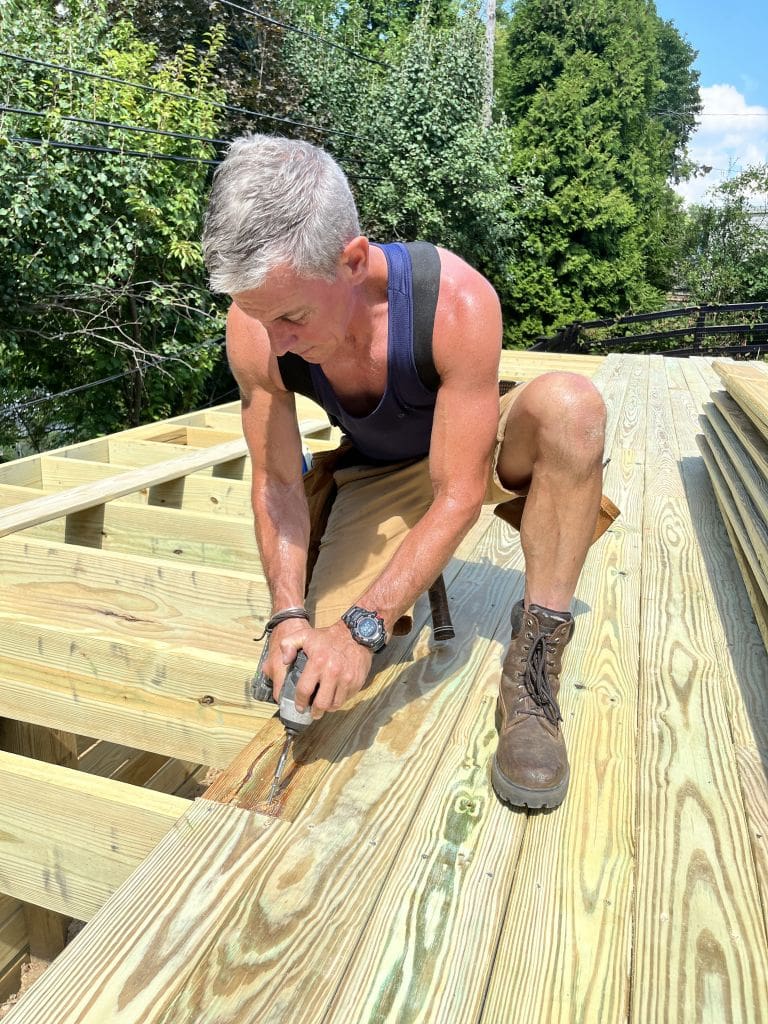
What other work boots have I tried?
I’ve tried various hikers and hiker/work boot hybrids, I’ve tried sneakers, and I’ve tried cheap-o knock offs that looked like work boots but felt like I was wearing Wonder bread bags on my feet.
And I have tried beefier brands with their own stores and homegrown pedigrees. However, the price tags and/or fit just didn’t work for me, so I’ve never been in a pair of boots that cost North of $200.
Hikers
I know plenty who like hikers, and they kind of worked, but then not really. There are so many industrially-designed overmolds and sole-to-upper glue connections that they didn’t stand a fighting chance after 6 months or so.
Hybrids
The hybrids–half hiker, half work boot–fared much better and I was certainly pleased with how they held up. But there were hooks on the upper laces instead of eyelets and they could mar a floor if I wasn’t careful kneeling down.
They were tread-less which was a problem in deep mud and snow. And they needed to be laced and unlaced and wearing them untied to run out to the truck in the morning to get something was impossible.
Timberland Pro
Lo and behold, I spotted the Timberland Pro 8-inch leather work boots for a mere $100–soft toe, thank you–and I was smitten. (Now these best work boots are about $130 on Amazon.)
But the proof is in the pudding.
Are the work boots tough?
Short story long, I’ve worn two pairs over the first year of wearing them doing everything I do: deck building, snow removal, interior trim, sheds, demolition, dump runs, fences, tree work, flood recovery and umpteen client meetings and slipping them on to run out to the truck or take out the trash and they’ve been game-on from top to bottom. I even built a pole barn in 3 inches of North Carolina clay-mud-slurry with nary a drop of the incessant water or mud inside the boot.
They’re so sturdy, it’s ridiculous. There’s no rubber to peel off of anything. There are no exposed stitches to abrade and unstitch. The oil-tanned leather upper is virtually impenetrable and is equally waterproof (no Wonder bread effect…awesome!)
The sole is ¾-inch thick and virtually un-wear-downable, yet it’s flexible and the whole unit is “hiker-like”–I don’t feel like I’m wearing a boot.
If I have to run wheelbarrows to move tons of stone from the drop zone to where I needed it (see pole barn above) I can run like I’m wearing a hiker or tough sneaker. It’s not exact, but they’re not concrete galoshes either.
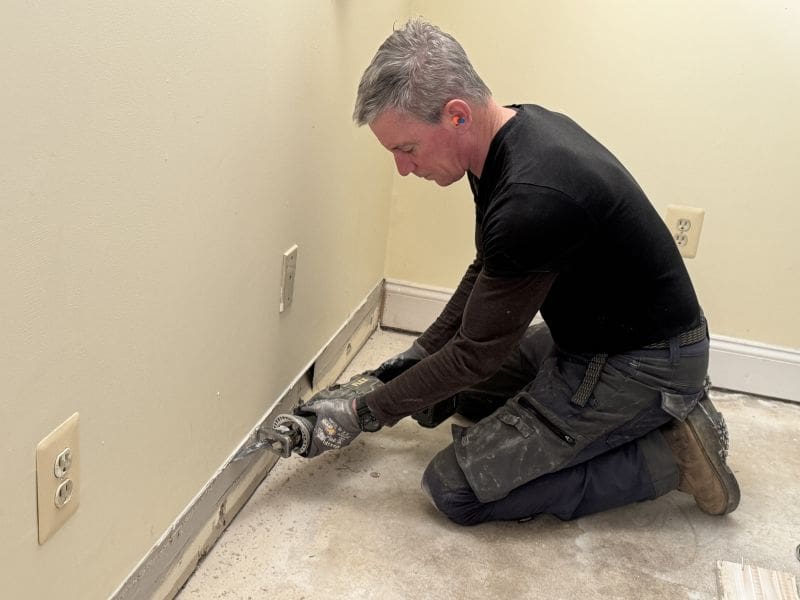
Are the boots comfortable?
The Timberland Pro boots are comfortable. Unlike hikers, they’re not built like a ruggedized running shoe. They’re a boot. With a heel. They kathunk on the floor.
Having been a runner for most of my life, I know when the cushioning goes in a running shoe or hiker and it hurts. (My body is particularly sensitive to this; I’ve seen guys wearing shoes that’d have me in traction if I wore them). But for the Timberlands, there’s enough meat in the sole, last, and upper that my sensitive feet feel supported.
How long until they wear out?
The only part that does “wear out”–I doubt many others would be bothered by this–is that the uppers get a little looser over time and my foot sloshes around a little. I tie them tighter, but eventually, I need a more snug capture of my foot. If this doesn’t bother you, this boot’s half life is somewhere around eternity.
The first pair developed a small hole in the toe of one boot maybe 6 months in. It seemed like my legs were hurting, like when a running shoe gives up the ghost. So I got a new pair. However, on the second pair 6 months in: there wasn’t a hole. And they wear the same way, getting a little looser on my feet around the 6-month mark. But, hardly any wear on the soles. I’ve consistently worked them as hard or harder than the first pair. Definitely the best work boots I’ve tried.
What’s the real value and where are the work boots made?
I’d love for these Timberland Pros to be made in America. However, they are near-sourced in the Dominican Republic, which seems pretty cool.
At around $130, the best work boots are an extreme value to me and serve me from trim work to digging post holes to running my tractor through 24 inches of snow. My feet feel good, dry, and there’s zero peeling plastic.
Have you tried the Timberland Pro work boots?
We’d love to know your take on the Timberland Pro 8-inch leather work boots. Have you tried them? How long did they last? Do you think they are the best work boots?
Or is there a work boot that you think it way better? Share in the comments below. We’d love to give your favorites a try to see how they compare.
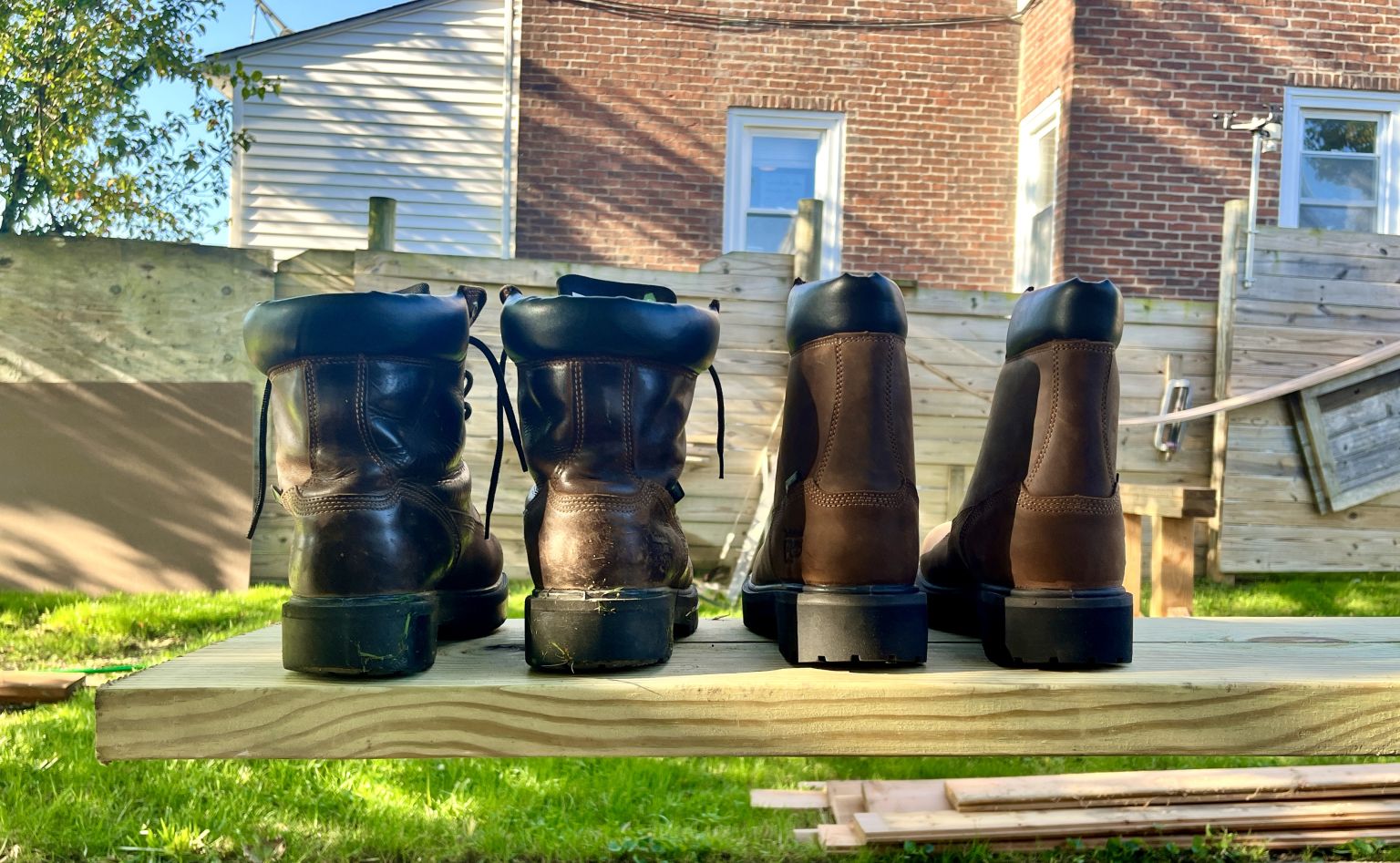
Check out our reviews of other work boots here.
